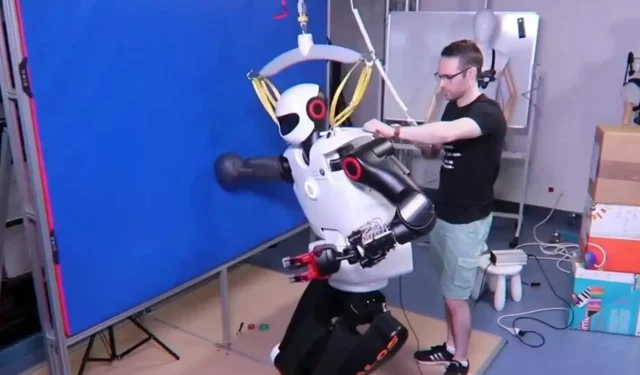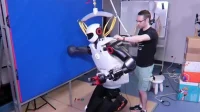Robots learn to hold on to walls so they don’t fall. The beginning of a really more natural behavior.
Done with falling robots? Researchers at the University of Lorraine have developed a “Damage Reflex”(“D-Reflex”) system that allows the TALOS humanoid robot to lean against a wall on its own when one of its cameras is broken. just lost his balance.
Robots learn to hold on to walls so they don’t fall
The neural network system uses its experience—in this case, at least 882,000 training simulations—to quickly find the point on the wall that will best give it the stability it seeks. The robot doesn’t need to know how damaged it is and can recover just as quickly as a real person.
The result, as IEEE Spectrum points out, is exactly what you think. Instead of falling to the ground and becoming completely unusable, the robot leans against the wall like a person who has just lost his footing and/or balance. It’s not particularly elegant and requires the robot to stop the hand at the moment of contact, but it’s effective three out of four times.
The Beginning of Really More Natural Behavior
D-Flex does not guarantee that all falls will be prevented, particularly because it cannot accommodate all possible positions or surfaces. The system also doesn’t help the robot recover from a distress alert, so you won’t see the robot limping along the wall until it finds help. The current approach is also based on a stationary bot, in any case it will not help if some mechanism fails at full speed.
The researchers, of course, hope to make their system work when the robot is in motion, and envision robots that can grab onto a chair or other difficult object when a fall is imminent. This may allow, for example, not to replace industrial robots, and also lead to the emergence of more “natural”humanoids who can learn to use the environment to their advantage.


